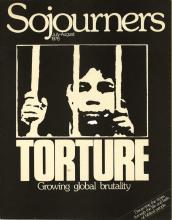The Philippines: the economics of torture
In every Philippine detention camp is an isolated building called the “safehouse.” Outside the soundproofed safehouses are the uninterrupted sounds of routine detention camp processing. Inside are the anguished cries of the men and women who are subjected day and night to the agony of physical and psychological torture.
Torture has been an integral part of President Ferdinand Marcos’ “New Society” since the imposition of martial law in September 1972. The objectives of the New Society programs are broadly stated to be political, social, and economic reformation. But the major issues dividing the people revolve around who controls the Philippine economy.
In the years prior to martial law the national mood increasingly attuned to economic independence. Labor unions, the press, the legislature, and the courts sought government resistance to control by outside economic interests. Their vision was of Filipinos regaining control of their economy, their industry, their capital, their agricultural production, and their trade.
This predominant mood was expressed in a decision by the Philippine Supreme Court only one month prior to the imposition of the martial law. Soon to expire was the parity treaty between the United States and the Philippines, which had given each equal economic treatment, equal access to resources, and equal right to own property. A Supreme Court decision would have confiscated much of the foreign-owned property and required corporations to be 60 percent owned by Filipinos, with Filipinos as executives and managers. Marcos’ reversal of this Supreme Court decision one month after the declaration of martial law demonstrated his firm opposition to the desire for economic independence.
Read the Full Article

